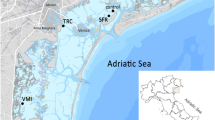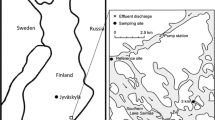Abstract
Cladocerans (or water-fleas) are important animals in freshwater exosystems. They are widely used in toxicity tests because of their small size, ease of culture, and sensitivity to chemicals. They are particularly suited to life-cycle tests because newly-hatched young can produce offspring in less than one week. Most data are available for European and North American species, and may be not be appropriate to Australian conditions. In the present study, eight Australian cladocerans were evaluated in three-brood life-cycle tests over ten days or less. Species were evaluated by duration of life cycle, ease of handling, numbers of young produced in three broods, and stability in laboratory culture.Ceriodaphnia cfdubia was the best test species. The greatest number of young, the highest survival rate and the shortest time to produce three broods were achieved in filtered Sydney mains water, aged in the presence of fish, using blended trout pellets and alfalfa as food.
Similar content being viewed by others
References
Adema, D. M. M.: 1978, ‘Daphnia magna as a Test Animal in Acute and Chronic Toxicity Tests’,Hydrobiologia 59, 125–134.
Cowgill, U. M., Emmel, H. W., Hopkins, D. L., Applegath, S. L., and Takahashi, I. T.: 1986, ‘The Influence of Water on the Reproductive Success and Chemical Composition of Laboratory Reared Populations ofDaphnia magna’,Water Research 3, 317–323.
Cowgill, U. M., Emmel, H. W., and Takahashi, I. T.: 1985, ‘Inorganic Chemical Composition of Trout Food Pellets and Alfalfa Used to SustainDaphnia magna Straus’,Bulletin of Environmental Contamination and Toxicology 34, 890–896.
Dean, J. H. and DeGraeve, G. M.: 1986, ‘A Screen Device to Eliminate ‘Floaters’ inDaphnia magna Toxicity Tests’,Environmental Toxicology and Chemistry 5, 1055–1057.
Elnabarawy, M. T., Welter, A. N., and Robideua, R. R.: 1986, ‘Relative Sensitivity of Three Daphnid Species to Selected Organic and Inorganic Chemicals’,Environmental Toxicology and Chemistry 5, 393–398.
Ganf, G. G. and Shiel, R. J.: 1985, ‘Feeding Behaviour and Limb Morphology of two Cladocerans with Small Intersetular Distances’,Australian Journal of Marine and Freshwater Research 36, 69–86.
Lawrence, S. G. (ED.): 1981, ‘Manual for the Culture of Selected Freshwater Invertebrates’,Canadian Special Publications in Fisheries and Aquatic Science 54, 166–167.
Mount, D. I. and Norberg, T. J.: 1984, ‘A Seven-Day Life-Cycle Cladoceran Toxicity Test’,Environmental Toxicology and Chemistry 3, 425–434.
Nebeker, A. V.: 1982, ‘Evaluation of aDaphnia magna Renewal Life-Cycle Test Method with Silver and Endosulfan’,Water Research 16, 739–744.
Organisation for Economic Co-operation and Development: 1987, ‘OECD Guidelines for Testing of Chemicals, Second Addendum’ Organisation for Economic Co-Operation and Development, Paris.
Smirnov, N. N., and Timms, B. V.: 1984, ‘A revision of the Australian Cladocera (Crustacea)’,Records of the Australian Museum, Supplement1, 1–132.
Author information
Authors and Affiliations
Rights and permissions
About this article
Cite this article
Julli, M., Chapman, J.C. & Thompson, G.B. Use of Australian cladocerans to generate life-cycle toxicity data. Environ Monit Assess 14, 353–362 (1990). https://doi.org/10.1007/BF00677927
Issue Date:
DOI: https://doi.org/10.1007/BF00677927




